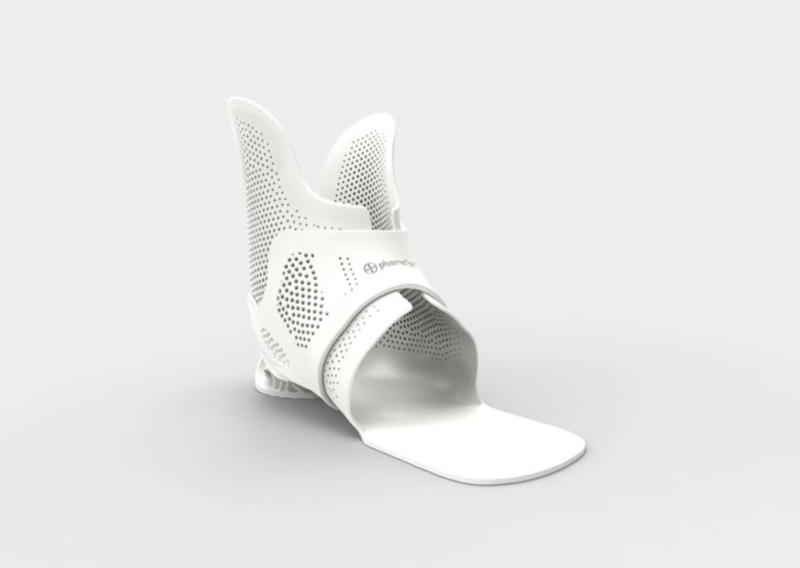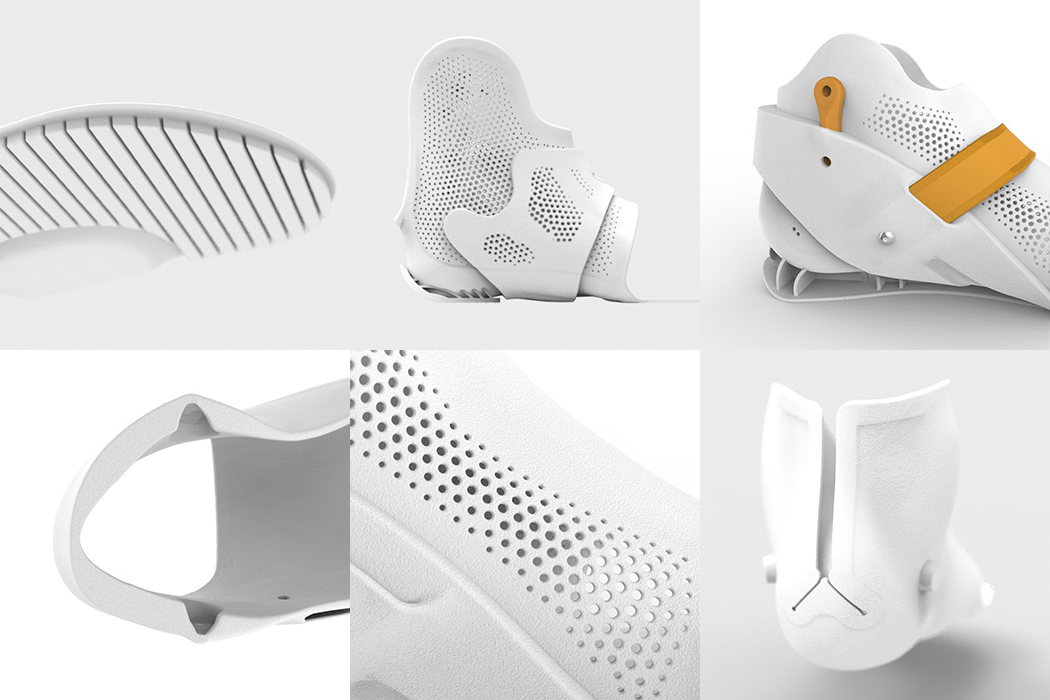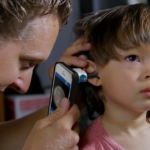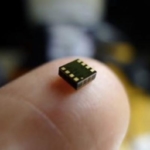3D printed ankle-foot orthotics for functionality and comfort
3D printing has played a large and varied role in medical implants, devices, and more. Australian researchers from the University of Sydney recently published a methodical review, outlining the challenges in traditionally made ankle-foot orthoses (AFO) and the broad potential for 3D printing in both manufacturing and health service delivery.

plus medica OT AFO. Pleasant breathability: the perforations in this ankle-foot orthosis with a ring closure system covering virtually the entire surface, preventing excessive sweating. EOS
by Bridget Butler O’Neal, 3Dprint.com February 15, 2019
In examining the feasibility of customized, 3D printed AFOs, the team evaluated biomedical properties and outcomes, along with comparing fit and comfort levels. Eleven different studies were involved, with the scientists working to develop more lightweight, flexible, easy-to-use AFOs.
Such devices are usually prescribed for kids and adults with conditions such as
Historically, AFOs have been known to be ill-fitting and uncomfortable, despite their intended use to help patients overall in walking, eliminating trips and falls, and assisting with balance. The scientists state that children, women, and individuals living at home alone tend to be most unhappy with traditional AFOs.
“…many children and adults with musculoskeletal and neuromuscular disorders don’t wear their prescribed AFOs and instead utilise compensatory strategies during gait despite these being physiologically inefficient and potentially injurious,” stated the researchers. “Therefore, many users only choose to wear their devices when their condition becomes severe even though earlier AFO use might have significant clinical benefits.”
Foot orthotics are usually made from plaster of Paris. Afterward, a thermoplastic vacuum forms over the positive model with polypropylene. There is extensive post-processing in this manual technique, and not only is it labor intensive, but limited in options for the patients, expensive, and it can take a long time for the patients to receive their devices. 3D printing in comparison can be exponentially faster, more affordable, completely patient specific in terms of fit, and offer more options.
“Novel patient-specific 3D printed AFOs are likely to have a dramatic effect on patient satisfaction, adherence to AFO usage and overall health related outcomes,” state the researchers.

All-round concept: integrated velcro holders on the lower leg (top), monolithic joint system, motion stopper with logo, integrated heel plate for stableness and connection of inner foot component (DAFO) via tab locks (from left to right). plus medica OT
Thirty-two adults participated, ranging from age 21 to 68.
“Four out of the eleven studies were conducted on patient populations including unilateral foot drop due to dorsiflexor weakness from stroke, cerebral palsy, L5 hernia, carbon monoxide intoxication and mechanical trauma, post-polio syndrome, trauma and cerebral palsy and an embolectomy. Six studies recruited healthy participants and one study did not report or evaluate the AFO in any participants (bench testing only).”
Ten of the studies explored whether or not a dynamic passive AFO (relying on the material properties and physical features to establish functional characteristics such as bending or rotational stiffness) was possible, while other studies integrated 3D printed parts with ‘off the shelf’ materials to produce ‘adustable stiffness.’
“Another study manufactured a segmented AFO consisting of a 3D printed calf section and foot section and a central interchangeable carbon fibre spring,” stated the researchers. “Similarly, another study integrated a commercially available metal hinge also capable of adjusting the stiffness of the AFO into a 3D printed articulated AFO.”
“Other designs also included an AFO with a 3D printed 3 mm calf and foot section connected with two carbon fibre rods and a 3D printed device supporting the ankle and foot and secured with laces. The only study that didn’t produce a dynamic passive AFO used 3D printing to produce a rigid (solid) AFO, however no testing was performed on the manufactured AFO.”

| Structural details of 3D printed AFOs illustrate freely selectable material thickness, breathable perforations, and leeway for innovation. plus medica OT |
SLS 3D printing was used in the studies, with a wide range of varying materials, from nylon to resins to epoxy photopolymers. Assessments of the patients included how well they were able to walk, how comfortable the AFOs were, accuracy in fabrication, and mechanical properties. They found ‘significant differences’ in range of motion for the ankle, when comparing traditional AFOs and SLS AFOs, as the SLS AFO did exhibit less range of motion.
“Significantly reduced plantarflexion during the early stance phase was observed between stiffness conditions, with the higher stiffness setting allowing the minimal amount of plantarflexion,” stated the researchers. “They suggested that tailoring the stiffness of SLS AFOs may provide support to suit different activities in a way that traditional AFOs are unable to offer.”
In gait analysis, they also compared an FDM polyurethane AFO tightened with shoe laces to a traditionally manufactured rigid polypropylene AFO in one participant:
“They found that both AFOs similarly improved temporal spatial parameters compared to barefoot walking. However, ankle kinematic data showed that the traditional AFO was more effective in supporting ankle dorsiflexion during swing compared to the 3D printed AFO.
“The authors suggested that this 3D printed AFO needed to be designed in more dorsiflexion to compensate for stretching of the AFO during wear. However, this is likely due to the design of the 3D printed AFO which was developed to be more like a supramalleolar orthosis rather than an AFO as the device only surrounded the ankle and hindfoot and not the lower leg.”
In the end, the team found that overall 3D printed AFOs were as good in quality as their conventionally-made counterparts. Mechanical stiffness and energy dissipation of the 3D printed AFOs were found to be similar, but the researchers noted that sample sizes were small and ‘study quality was generally low.’
“The use of 3D printing to manufacture AFOs seems to have many potential benefits over traditional methods, including the development of novel designs that optimize stiffness and energy dissipation, improve walking biomechanics, comfort and fit,” concluded the team.
“The feasibility of using 3D printing to manufacture AFOs is dependent on the AFO design and printing method and therefore additional research is needed before 3D printed AFOs can be integrated into clinical practice. Further research is required to evaluate 3D printing AFOs in pediatric populations, and to determine the most appropriate printing technique and optimal materials to improve walking ability, patient satisfaction and long-term usage and durability.”
 Source 3Dprint.com
Source 3Dprint.com
| References |
Feasibility of designing, manufacturing and delivering 3D printed ankle-foot orthoses: a systematic review, Wojciechowski E, Chang AY, Balassone D, Ford J, Cheng TL, Little D, Menezes MP, Hogan S, Burns J. J Foot Ankle Res. 2019 Feb 7;12:11. doi: 10.1186/s13047-019-0321-6. Full text
| Further reading |
The functional effect of 3D-printing individualized orthosis for patients with peripheral nerve injuries: Three case reports, Chae DS, Kim DH, Kang KY, Kim DY, Park SW, Park SJ, Kim JH. Medicine (Baltimore). 2020 Apr;99(16):e19791. doi: 10.1097/MD.0000000000019791. Full text
Additive manufacturing of specific ankle-foot orthoses for persons after stroke: A preliminary study based on gait analysis data, Liu Z, Zhang P, Yan M, Xie YM, Huang GZ. Math Biosci Eng. 2019 Sep 9;16(6):8134-8143. doi: 10.3934/mbe.2019410. Full text
A validated computational framework to evaluate the stiffness of 3D printed ankle foot orthoses, Ielapi A, Lammens N, Van Paepegem W, Forward M, Deckers JP, Vermandel M, De Beule M. Comput Methods Biomech Biomed Engin. 2019 Jun;22(8):880-887. doi: 10.1080/10255842.2019.1601712. Epub 2019 Apr 8.
Computational and experimental evaluation of the mechanical properties of ankle foot orthoses: A literature review, Ielapi A, Forward M, De Beule M. Prosthet Orthot Int. 2019 Jun;43(3):339-348. doi: 10.1177/0309364618824452. Epub 2019 Jan 31.
A novel experimental setup for evaluating the stiffness of ankle foot orthoses, Ielapi A, Vasiliauskaite E, Hendrickx M, Forward M, Lammens N, Van Paepegem W, Deckers JP, Vermandel M, De Beule M. BMC Res Notes. 2018 Sep 5;11(1):649. doi: 10.1186/s13104-018-3752-4. Full text
Ankle-Foot Orthosis Made by 3D Printing Technique and Automated Design Software, Cha YH, Lee KH, Ryu HJ, Joo IW, Seo A, Kim DH, Kim SJ. Appl Bionics Biomech. 2017;2017:9610468. doi: 10.1155/2017/9610468. Epub 2017 Jul 30. Full text
Customized 3D printed ankle-foot orthosis with adaptable carbon fibre composite spring joint, M. Walbran, K. Turner & A.J. McDaid, Wei Meng (Reviewing Editor) (2016) Cogent Engineering, 3:1, DOI: 10.1080/23311916.2016.1227022. Full text
Efficacy of different techniques of AFO construction for hemiplegia patients: A systematic review, Pourhosseingholi E, Farahmand B, Bagheri A, Kamali M, Saeb M. Med J Islam Repub Iran. 2019 Jun 3;33:50. doi: 10.34171/mjiri.33.50. Full text, PDF
Also see
Orthoses 3D Printing plus medica OT
plus medica OT – Maximum Flexibility and Design Freedom in the Production of Orthoses Electro Optical Systems EOS
AbilityMate: Producing open assistive devices for people with disabilities P2P Foundation






